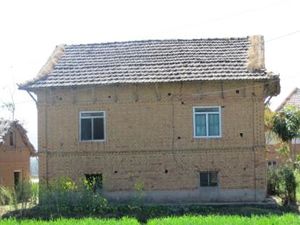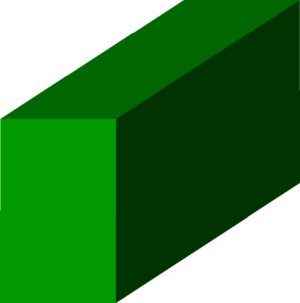Kathmandu Living Labs/exposuresurvey
General Tags For Educational and Health Facilities
This page lists the tags used by Open Cities Kathmandu team to map and populate exposure survey data for educational and health facilities in OpenStreetMap.
Educational Facility
Used to map and populate exposure data for educational facilities : kindergarten, school, college.
Amenity
For tagging amenity type of educational facilities
| Key | Value | Element | Description |
| amenity | college | A college is an educational institution where students pursue their studies above the intermediate level. | |
| amenity | kindergarten | For children too young for a regular school (also known as playschool or nursery school). | |
| amenity | school | School and grounds; Inclusive of high schools providing classes till intermediate level. | |
| amenity | university | A university campus. |
Level of Education
Used to specify the level of education provided by an educational institution (school, college, university)
| Key | Value | Description |
| isced:level | college | Runs classes after intermediate level. |
| isced:level | higher_secondary | Runs classes till intermediate level. |
| isced:level | kindergarten | Pre-school for kids. |
| isced:level | lower_secondary | Runs classes till 8th grade. |
| isced:level | primary | Runs classes till 5th grade. |
| isced:level | secondary | Runs classes till 10th grade. |
| isced:level | university | Provides both undergraduate and postgraduate education. |
Management-type of educational facility
Used to tag management-type of educational facility.
| Key | Value | Description |
| operator:type | community | This type of educational facility is run through community resources. |
| operator:type | government | This type of educational facility is run by the government. |
| operator:type | private | This type of educational facility is run by private bodies. |
Additional Attributes of Educational Building
| Key | Value | Description |
| building_count | number | The number of buildings in an educational facility. |
| personnel:count | number | Staff number - teaching and non-teaching. |
| student:count | number | The number of students in an educational facility. |
Health Facility
Used to map and populate exposure data for health facilities : hospital, clinic, health-post.
Amenity
For tagging amenity type of health facilities.
| Key | Value | Element | Description |
| amenity | clinic | Private medical centres run by a group of doctors or a single doctor. | |
| amenity | dentist | Provides oral health services. | |
| amenity | health_post | Medical centres run by the Government to provide free primary health services to local communities. | |
| amenity | hospital | Bigger units in terms of health service providers where treatment is provided by specialized staff and equipments. |
Management-type of Health Facility
Used to tag management-type of educational facility.
| Key | Value | Description |
| operator:type | community | This type of health facility is run by community resources. |
| operator:type | government | This type of health facility is run by the government. |
| operator:type | private | This type of health faciltiy is run by private bodies. |
Services rendered
These tags are used for defining the services rendered by health facilities.
| Key | Value | Description |
| facility:icu | yes / no | Presence or absence of Intensive Care Unit. |
| facility:operating_theatre | yes / no | Presence or absence of Operation Theatre. |
| facility:ventilator | yes / no | Presence or absence of Ventilator. |
| facility:x-ray | yes / no | Presence or absence of X-ray. |
Additional Attributes
| Key | Value | Description |
| building_count | number | The number of buildings in a health facility. |
| capacity:beds | number | The number of beds available for treatment in a health facility. |
| opd:patients:count | number | The number of OPD patients in a day. |
Building
Used to tag educational and health facility buildings. See Buildings for further details of usage of this tag and man_made=* for tagging of various other structures.
| Key | Value | Element | Description |
| building | clinic | A building where a doctor/group of doctors run medical check ups. Also see amenity=clinic | |
| building | college | A college building. Use amenity=college to tag a college premise. | |
| building | dentist | A building where dentists provide oral health services. For more details check amenity=dentist | |
| building | health_post | A building owned/rented by government to provide free medical services to local patients. | |
| building | hospital | A building which forms part of a hospital. Use amenity=hospital for the hospital ground. | |
| building | kindergarten | A building where pre-school children are looked after. Use amenity=kindergarten to tag the kindergarten. | |
| building | school | A school building. Also see amenity=school | |
| building | university | A building which forms part of an university. Also see amenity=university |
Building Structure
Used to identify structural system of buildings. The structural system must be examined by knowledgeable person.
| Key | Value | Description |
| building:structure | adobe | One of the oldest building typology in Nepal. Sun-dried bricks (earthen) with mud mortar are used for construction of walls. |
| building:structure | engineered_reinforced_concrete | Column size is minimum of 300 mm X 300 mm or more depending on load induced. |
| building:structure | load_bearing_concrete_block_wall_in_cement_mortar | Concrete blocks in cement mortar. |
| building:structure | load_bearing_concrete_block_wall_in_mud_mortar | Concrete blocks in mud mortar. |
| building:structure | load_bearing_brick_wall_in_cement_mortar | The structural walls are one brick thick (230mm) constructed in 1:6 cement sand mortar, in general. |
| building:structure | load_bearing_brick_wall_in_limesurkhi_mortar | A composition of lime and surkhi is used to improve the quality of mortar in buildings. Most of the buildings built during Rana regime are of this type. |
| building:structure | load_bearing_brick_wall_in_mud_mortar | Brick walls in mud mortar. The walls are usually 350-450 mm. thick. |
| building:structure | load_bearing_stone_wall_in_cement_mortar | Cement mortar is used to bind the stones together. The walls are usually 14-18 inches thick. |
| building:structure | load_bearing_stone_wall_in_mud_mortar | Mud mortar is used to bind the stones together. The walls are usually 18-24 inches thick. |
| building:structure | non_engineered_reinforced_concrete | Building structural system with reinforced concrete frames and unreinforced brick masonry infill in cement mortar. The column size is predominantly 9x9 inches, infill walls are 9 inch thick and internal walls are 4.5 inch thick. |
Floor Material
Used to tag the type of floor materials available in buildings.
| Key | Value | Description |
| floor:material | bamboo | Flexible bamboo flooring. |
| floor:material | concrete | Rigid type of flooring with reinforced cement concrete. |
| floor:material | jack_arch | Semi-rigid jack-arch flooring. |
| floor:material | wood | Wooden flooring. |
Roof
You can characterize the building roof using a catalogue of well known roof types. Additional roof shapes may be introduced later (S3DB_Proposals), including advanced approaches for manual modelling (e.g., ProposedRoofLines or parts of OSM-4D/Roof_table).
| Image | 
|

|

|

|

|

|

|

|

|

|

|
|---|---|---|---|---|---|---|---|---|---|---|---|
| roof:shape | flat | skillion | gabled | half-hipped | hipped | pyramidal | gambrel | mansard | dome | onion | round |
Roof Material
Outer Material of Roof .
| Key | Value | Description | Picture |
| roof:material | thatch | Thatched roof | |
| roof:material | roof_tiles | Tiles are put together to roof a building. | |
| roof:material | metal | Metal, flat or waved is used for roofing. | [[1]] |
| roof:material | concrete | RCC/RBC roofing. |
| Key | Value | Description |
| building:ownership | self / rent | The ownership of a facility building. |
| building:levels | number | Number of floors of a building above the ground (without levels in the roof).
If you tag new buildings, try to give a height value. Try to use building:levels=* only in addition to an height tag! |
| start_date | number | The age of a building in terms of it construction year. |
| retrofit | yes / no | Yes if a building has been retrofitted. |
Vulnerability Factors
These factors aid to the identification of weak links in building structures.
Building Neighbourhood
Adjacency of buildings is used to study the pounding effect of one building on another.
| Key | Value | Description |
| building:adjacency | one_side_same_height | If a building has another building of same floor height adjacent to it on one side. Note that the buildings may have different number of storeys but the same floor height. |
| building:adjacency | one_side_different_height | If a building has another building of a different floor height adjacent to it on one side. |
| building:adjacency | two_side_same_height | If a building has adjacent buildings of same floor height on any two sides. |
| building:adjacency | two_side_different_height | If a building has adjacent buildings of different floor heights on any two sides. |
| building:adjacency | three_side_same_height | If a building has adjacent buildings of the same floor height on three of its sides. |
| building:adjacency | three_side_different_height | If a building has adjacent buildings of different floor heights on three of its sides. |
| building:adjacency | free_standing | If a building is sufficiently spaced from other buildings on all four sides, it is a free standing building. |
Shape in Plan
Shape and geometry of buildings are used to determine earthquake resistance.
| Key | Value | Description | Picture |
| shape:plan | rectangular | A building shaped like a box, as rectangular in plan. | |
| shape:plan | triangular | Triangular shaped building plan. | |
| shape:plan | multiprojected | If the building plan has multiple projections. | |
| shape:plan | narrow_long | If the length of a building is 3 times its breadth. | |
| shape:plan | L-shape | L-shaped building plan; projected part if less than 1/6th of the building length, it is considered to be rectangular in shape. | |
| shape:plan | T-shape | T-shaped building plan. | |
| shape:plan | U-shape | U-shaped building plan. |
Shape in Elevation
Vertical geometric shape of buildings is termed as shape in elevation.
| Key | Value | Description | |
| shape:elevation | regular | If the vertical geometry of a building is regular. | |
| shape:elevation | setback | Building geometry with upper stories set back from a broader base structure. | |
| shape:elevation | narrow_long | If the height of a building is 3 times longer than the base length. |
Physical Condition
The observed physical condition of a building. This is related to the structural strength of a building and not the tidiness.
| Key | Value | Description |
| physical_condition | poor | If a building has low quality of construction and material deterioration. |
| physical_condition | average | If a building has average quality of construction and finishing. |
| physical_condition | good | If the building has good quality of construction and finishing. |
Presence of Earthquake Resistant materials
The presence of bands at lintel, sill and roof level, corner stitches, vertical reinforcements at corners and junctions of wall.
| Key | Value | Description |
| seismic_resistance | yes | Presence of earthquake resistant element. Retrofitting includes lintel beam, sill band, vertical reinforcement and corner stitch in masonry structures |
| seismic_resistance | partial | Lintel beams present, other retrofitting elements absent. |
| seismic_resistance | no | No retrofitting elements. |
Additional Attributes
| Key | Value | Description |
| building:overhang | yes / no | Presence or absence of walls in projected cantilever or slabs more than 5 feet. |
| building:soft_storey | yes / no | Soft storey commonly occurs in buildings in urban areas where ground floor is usually open for parking or shops for commercial purposes. |
| building:bay:x | number | Number of beams rigidly connected to columns on either side along E-W direction. For L-shaped, U-shaped and multi-projected buildings, only the number of bays of the projected wing is noted, ie. minimum number of bays along either direction. |
| building:bay:y | number | Number of beams rigidly connected to columns on either side along N-S direction. |
| column:size | 'number'x'number' | Lateral dimensions of column in inches. |










